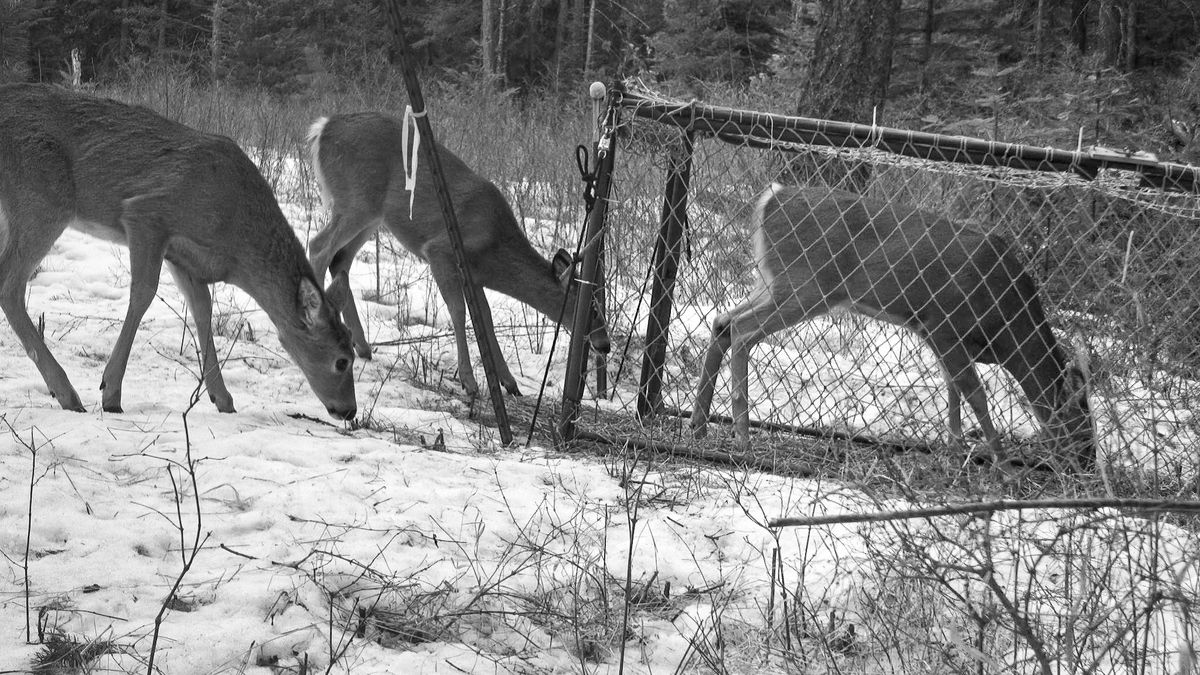Video highlights longterm Washington study examining the complicated relationship between wolves, prey and other predators

Wolves. Cougars. Bears. Prey and, oh my, people.
That complicated configuration of animals is the subject of a newly released Washington Department of Fish and Wildlife video focusing on the ongoing Predator-Prey Project. In the 13-minute video, to be released Thursday at the Washington Department of Fish and Wildlife’s commission meeting, scientists, politicians and wildlife managers explain the purpose of the multiyear study, accompanied by breathtaking videos of Washington’s native carnivores.
The project started in 2016, with one main question: How was the return of wolves to the Evergreen State impacting other animals?
Wolves naturally returned to Washington in 2008, after being reintroduced in Yellowstone and parts of Idaho in 1995 following their extermination from most of the continental United States. Wolves in Yellowstone National Park provided a trove of data about how and what these long absent predators ate, their pack dynamics and the cascading ecological impacts they can have on the parks landscape.
Washington and Yellowstone National Park, however, are much different places. Despite being the smallest state in area (and having the least public land) in the continental West, Washington has nearly a full collection of native carnivores – black bears, cougars, lynx and wolves. At the same time, Washington is the second most-populous Western state with more than 7 million people.
“We know that we can’t take the lessons learned in Yellowstone and apply them here in Washington,” WDFW wolf biologist Trent Roussin said in Thursday’s video.
All of which provided managers and scientists a rare real-time opportunity. What would the return of a top predator – wolves – look like on a landscape heavily impacted by humans? And how can humans and carnivores, like wolves, live together?
“That’s I think the biggest thing that come out of this. Balance between predators and prey and the people who live here,” Republican state Rep. Joel Kretz said in the video. “There is a balance that can be found. We just haven’t got there yet. And I’m hopeful. Guardedly hopeful.”
The video explains how WDFW, in partnership with the University of Washington, gathers the data. It includes obvious things, like collaring wolves. But it also requires that biologists play crime-scene detective. Researchers monitor collared deer and elk. When those collared animals die, the researchers head into the field to try and figure out what killed them.
While the study will answer the big question – how wolves are impacting deer and elk – it’s gathering granular detail that will be useful in all sorts of ways.
“We’re getting fine scale location data of each individual animal, which can be hundreds of thousands of points on the landscape,” said Melia DeVivo, a ungulate research scientists with WDFW in the video.
Perhaps even more important, all the detailed information will allow researchers and wildlife managers to track, over time, how wolves impact other species, prey and predators alike.
In particular, the dynamic between cougars and wolves is something researchers are looking at.
“We want to understand wolf-cougar interactions,” UW Ph.D. student Lauren Satterfield said.
The study is still ongoing, with some results expected in 2022. The data collected over the past years will be fed into models that can help researchers figure out what is influencing animals populations.
The video is the latest installment in a series the state has commissioned.
The video cost about $31,000.
“We get so many questions and comments about ungulate populations in relation to wolves and other carnivores,” Staci Lehman, a department spokeswoman, said in an email. “We tell people about the Predator-Prey Project all the time, but telling them about a scientific study that we don’t have data from didn’t seem to have as much impact as a video.”
For wildlife managers tasked with the dizzying task of supervising animals and people, the study’s results could be an invaluable tool.
“For me, the Predator-Prey Project matters because it’s more information, so I can do my job better,” District 1 regional biologist Annemarie Prince said.
Brian Kerston, a carnivore research scientists, added, “That’s our ultimate obligation. To do the best science we possibly can. To get the best information we possibly can to really make sure that both people and wildlife thrive into the future.”